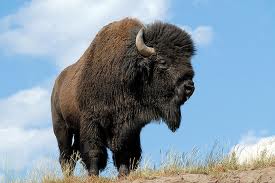2009 (364)
2010 (272)
2011 (195)
2012 (205)
2013 (210)
2014 (155)
2015 (172)
2017 (152)
2018 (173)
2020 (549)
2021 (413)
2022 (545)
2023 (331)

Why was western Nevada's largest recorded wildfire named the Bison Fire?
10:04 am, Aug 1, 2013 | Written by Emerson Marcushttp://blogs.rgj.com/askthergj/2013/08/01/why-was-western-nevadas-largest-recorded-wildfire-named-the-bison-fire/

The Bison Fire burns July 8 just east of homes in Gardnerville. Emerson Marcus/RGJ
Question: Why was the Bison Fire named the Bison Fire?
Answer: Fire names are often given by first responders and most often based on geographical signifiers.
The Bison Fire was a little different, but geography played a role.
The Bison Fire was the largest western Nevada wildfire on record burning roughly 43 square miles and costing more than $7 million. It burned about nine days from July 4 to July 13.
On July 1, a separate fire started near Buffalo Canyon east of Gardnerville. That fire was named the Buffalo Fire, Sierra Front Interagency Dispatch Center said. When a lightning strike sparked a second fire July 4, the name “Buffalo Fire” had been taken.
So it was given the name “Bison Fire” because a Bison is an animal similar to a Buffalo, Sierra Front said. That name was given by the fire's incident commander, dispatch said.
More than 1,000 firefighters worked the blaze, and people were asked to evacuate in the Smith Valley. Two firefighters suffered minor injuries and old abandoned mines were the only structures burned along the fires path in the Pine Nut Mountains.
Of course, Bison is the scientific term of the ox-like animal that roams the North American plains.
So maybe it makes sense after all?




